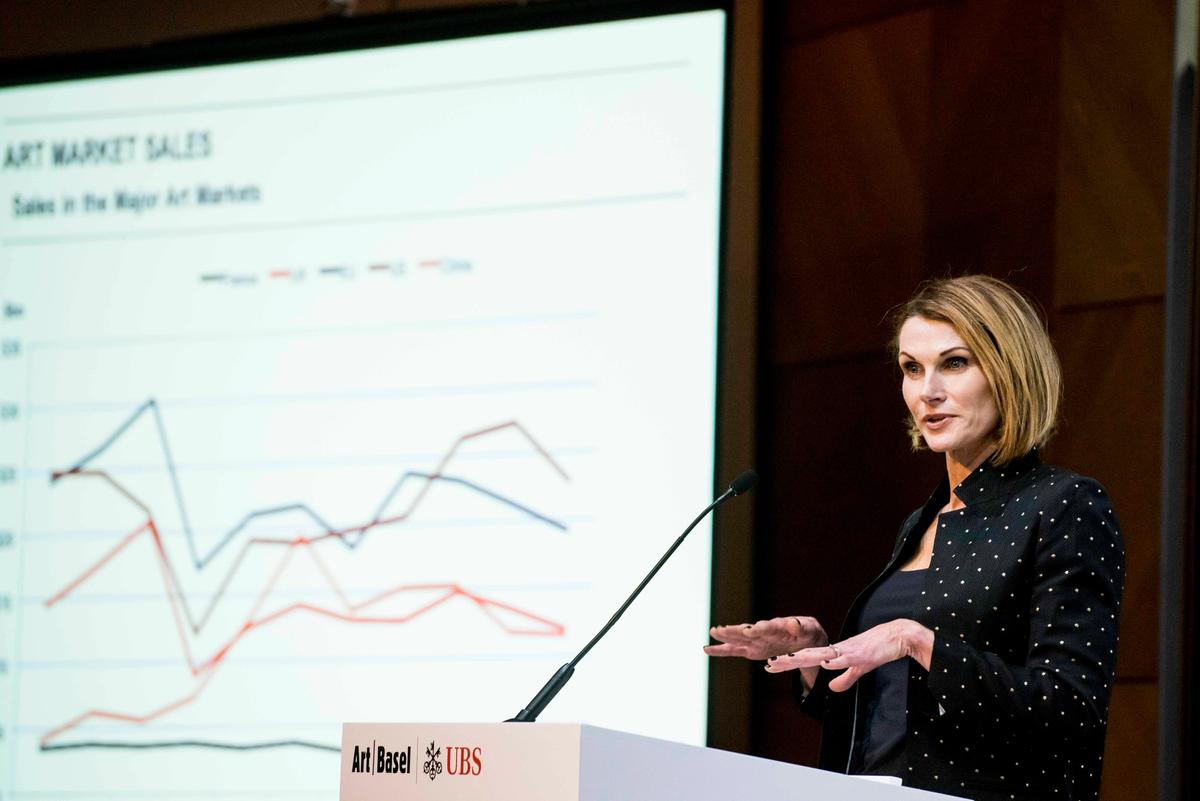A year and a half since the onset of the Covid-19 pandemic, the art market is making a steady recovery, with millennial buyers spending the most in the first half of 2021—nearly double that of Gen X and close to four times that of Boomers.
According to a mid-year survey of 700 dealers, conducted by the cultural economist Clare McAndrew and published yesterday by Art Basel and UBS, sales are up 10% compared with the same period last year when they plunged 20%. Galleries with a turnover of £10m or more fared best, reporting a 21% increase in sales, while mid-tier galleries saw a 3% decline and those with a turnover of less than $250,000 saw a “marginal” dip.
One of the most significant developments to have emerged from the pandemic was the art market’s embrace of tech platforms and that has continued, even as some physical events slowly returned in the first half of 2021. The share of online sales was double the level of 2019, with digital transactions accounting for 33% of all sales. Online viewing rooms have not proved the most lucrative for dealers, however, contributing just 4% to the top line, down from 9% last year as galleries invested in their own websites.
As the art world becomes more digitally savvy, it is perhaps unsurprising that digital art has been identified as a key area of growth, according to a survey of 500 high net worth (HNW) collectors. Traditional media—paintings, sculpture and works on paper—still represent the greatest share of spending at 31%, though digital, film and video are growing in significance, accounting for a significant 12%. Almost half of HNW collectors said they would be interested in buying digital works in the coming 12 months.
NFTs (non-fungible tokens) were a buzzword in the first half of 2021, though their sales are still largely conducted on platforms outside of the traditional art market channels. As such, digital art sales accounted for less than 0.5% of the value of sales in the primary market, though this share is likely to grow as the NFT and art markets converge. Citing data from nonfungible.com, McAndrew’s report noted that NFT sales on the Ethereum network grew from $17m in the first half of 2020 to almost $1.3bn for the same period in 2021. Art accounted for $324m of that total.
A “bubble-like” secondary market for NFTs also emerged in the first half of the year, “with speculators trading in and out of NFTs at a much more rapid pace than would ever have been possible in the traditional secondary art market”, McAndrew writes.
While dealers and collectors were largely positive about the impact NFTs have had in expanding interest in art, question marks remained over the “slushpile” of low quality, derivative NFTs coming onto the market. McAndrew’s report suggests that the intermediation of dealers “in vetting quality and sorting information”, as well as “providing knowledge and expertise and developing long-term relationships”, will continue to be beneficial to both artists and collectors in the NFT world and beyond. For now, collectors are unwilling to bypass galleries altogether.
Alongside millennials, female collectors boosted the bottom line as their wealth grew faster than men’s. In the first half of 2021, spending by female HNW collectors increased by just over one third to $410,000, more than double the level of their male counterparts, whose spending grew by just 9%. However, while progress is being made towards gender equality in wealth distribution, there is no evidence to suggest that women artists are benefiting from this growth.
According to McAndrew, men tend to buy at higher prices at auction while women buy at higher prices in the gallery sector.
Employment appears to be stabilising, with the number of staff employed by galleries returning to pre-pandemic levels. McAndrew found that 25% of galleries had hired staff in the first half of 2021 while 13% downsized, though the withdrawal of government support packages such as furlough could have an impact yet.
Indeed, McAndrew notes there is a lag on official figures on gallery closures, but says generally businesses have managed to weather the storm.


